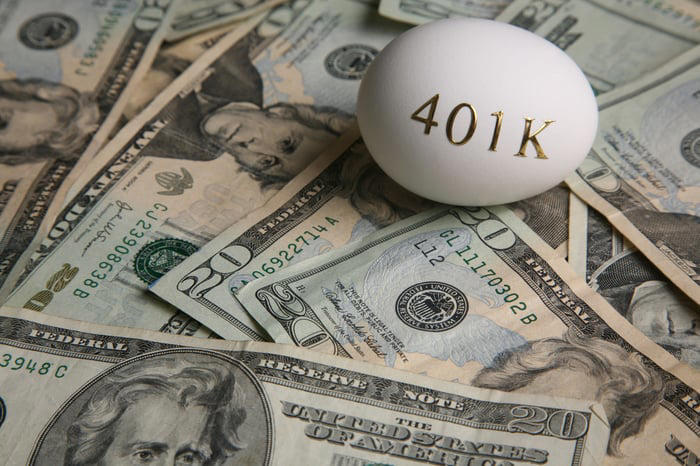You can easily do for yourself what they did (at least most of it).
Although it’s not unheard of for a 401(k) account balance to reach the seven-figure mark, it is rather rare.
Mutual fund company Vanguard Group reports that the average workplace-retirement account for clients aged 65 or older is only $272,588, while the median (or midpoint) balance for these folks is a much smaller $88,488. Obviously, a very small number of very big 401(k) accounts is skewing the mathematical average higher!
These numbers beg an important question: What the heck did these people do so differently than almost everyone else to achieve what so few people do? The answer to the question is three-part, although none of the three parts is complicated. You could readily do the same for yourself.
They “maxed out” their contributions each and every year
Even if you’re lucky and smart, building a million-dollar 401(k) is tough to do simply because you’re limited by time and the amount of money you’re allowed to contribute in any given year.
For 2024, the most anyone is permitted to add to a 401(k) account is $23,000, up slightly from 2023’s figure of $22,500. This inflation-adjusted cap was only $17,500 back in 2014, however, and a mere $9,240 in 1994. Indeed, had someone begun making their maximum annual contributions beginning in 1994, the most they could have deposited as of last year is a total of $449,480. That’s a far cry from $1 million.
So, how did some people manage to become 401(k) millionaires anyway? They contributed as much as they could to these accounts every single year that they could. At least some of that money has been invested and growing for as long as 30 years. Given that time does most of the heavy lifting for all investors, this is no small detail.
Also, know that in most cases, these people’s employers helped out. While not all of them do so, most companies match an employee’s own contributions to a 401(k) account up to 6% of that individual’s salary. This can mean anywhere from a few hundred dollars’ worth to a few thousand dollars’ worth of free money every year.
They invested wisely
Getting investable cash into a retirement account is obviously important. But the effort doesn’t end there. This money must be effectively put to work to achieve the most growth at the lowest degree of risk. And that’s easier said than done.
There was a time not too terribly long ago when a retirement plan’s mutual fund choices were (proverbially speaking) slim pickings — your options were largely limited to that provider’s own proprietary funds. This in and of itself isn’t disastrous. But given that most actively managed mutual funds underperform the broader market, your best hope was that an index fund based on the S&P 500 was offered.
Your options are generally better now, with most plans at least offering one or two passively managed index funds. The thing is, these are still usually better choices than all your other fund options.
So, what? The big “so what” is that the most successful 401(k) investors likely recognized their best bet was buying something simple, like an S&P 500 fund, and just leaving it alone to let that holding fester. Most other mutual fund picks would have crimped their overall performance, while constantly swapping these holdings out for other, more promising funds would have only done more damage to their net long-term gains.
In other words, 401(k) millionaires understand that less is more and simpler is better.
They’ve been at it for a long, long time
Last but not least, even those people who regularly maxed out their 401(k) contributions and invested that money wisely still didn’t become 401(k) millionaires overnight. They didn’t do it in a decade either. Indeed, even if you achieved the overall stock market’s average annual return of about 10%, it would still take you at least 20 years to reach the seven-figure mark, and that’s if you were incredibly lucky. It’s a 25-year project for most folks, and that’s being conservative!
Most people innately understand that growing a million-dollar retirement account is a marathon rather than a sprint, even if they’ve not overtly done the predictive math. The important message here, however, is neither qualitative nor quantitative. Instead, the key takeaway is to make a point of sticking with your plan and continuing to contribute money, even when you’re discouraged or it’s difficult to do so. That’s often when things are on the verge of improving. As the old adage goes, it’s always darkest before dawn.
This might help. According to numbers crunched by mutual fund company Hartford, a $10,000 investment in the S&P 500 back in 1994 would be worth roughly $180,000 today. Had you missed just the 10 best days during that time, however, your investment’s value would be considerably less at around $80,000. And if you were to miss the 20 best days for stocks during this stretch, you’d have a little less than $50,000.
Hartford adds that around half of the market’s biggest daily gains actually take shape during a bear market, while one-fourth of them occur during the first two months of a new bull market when nobody’s expecting them. The problem is that no one has any idea exactly when those banner days are going to materialize. They just do.
The point is, by leaving things alone, most 401(k) millionaires just so happened to be invested when these days occurred.

